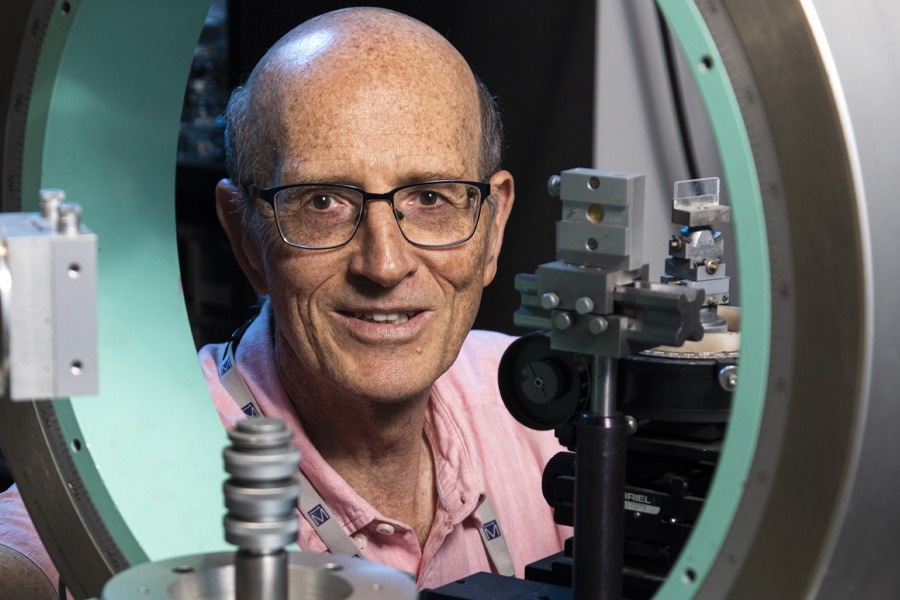Investigators from the FAMU-FSU College of Engineering and the National High Magnetic Field Laboratory revealed that when the compound tin selenide heats up, atomic-level structural changes occur, allowing it to conduct electricity but not heat.
 Theo Siegrist, a professor of chemical and biomedical engineering at the FAMU-FSU College of Engineering. Image Credit: Mark Wallheiser/FAMU-FSU College of Engineering.
Theo Siegrist, a professor of chemical and biomedical engineering at the FAMU-FSU College of Engineering. Image Credit: Mark Wallheiser/FAMU-FSU College of Engineering.
The National Science Foundation and the Department of Energy funded the research, which could result in new technologies for applications like refrigeration or waste heat recovery from cars or nuclear power plants. Nature Communications published the findings.
Tin selenide is a curious compound. It has gotten a lot of interest for its special high-temperature thermoelectric properties. Optimizing those characteristics may lead to viable options for sustainable power generation and other uses in the future.
Theo Siegrist, Professor, Chemical and Biomedical Engineering, Florida State University
Researchers were already aware that tin selenide had a high thermoelectric coefficient at high temperatures, implying that it could generate a strong electric current from a temperature gradient. Understanding how and why this occurs was a question the team set out to answer.
The scientists discovered that as the compound heated up, the bonds between tin and selenium stayed mostly unchanged, with three short and several long bonds still connecting the two elements. However, the tin atoms in the compound began to move around, transforming it from a wholly ordered to a partially disordered lattice structure.
The initial idea about this change was that the atoms were displaced, but we found that it is an order-disorder phase transition that was actually what was happening. The tin atom was flopping around, so to speak. That was what allowed tin selenide to scatter the energy waves that conduct heat.
Theo Siegrist, Professor, Chemical and Biomedical Engineering, Florida State University
A good thermoelectric material must have high electrical conductivity but low thermal conductivity. This is accomplished in tin selenide by a dynamic partial disorder of the tin atoms at high temperatures, which results in a decrease in heat conductivity.
Siegrist worked with investigators from Oak Ridge National Laboratory and the University of Tennessee, Knoxville, on the project. To test the material, they used a spallation neutron source, a type of particle accelerator at ORNL. The accelerator fires protons at a target, producing bursts of neutrons that allow scientists to examine the target’s crystal structure.
Investigators can comprehend what is driving certain properties that engineers may want to optimize by investigating what is happening at the atomic scale.
This is fundamental research, and we are interested in the mechanism and influence of the material to get it to do what we want in a thermoelectric device. All these ideas can improve energy conversion devices by making them more efficient.
Theo Siegrist, Professor, Chemical and Biomedical Engineering, Florida State University
Simon A. J. Kimber from Burgundy-Franche-Comté University contributed to the study along with scientists from ORNL and the University of Tennessee,
Journal Reference:
Jiang, B., et al. (2023). The curious case of the structural phase transition in SnSe insights from neutron total scattering. Nature Communications. doi.org/10.1038/s41467-023-38454-0.